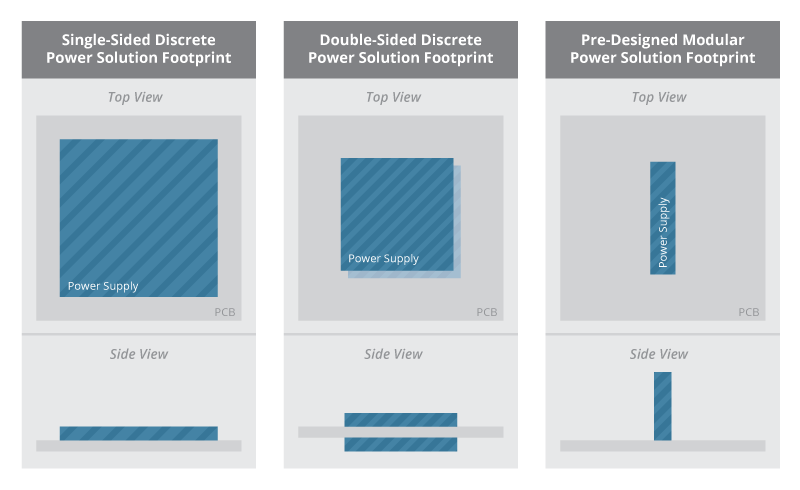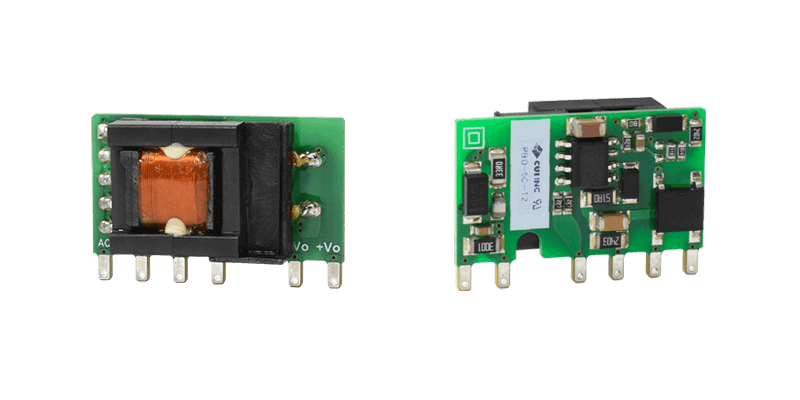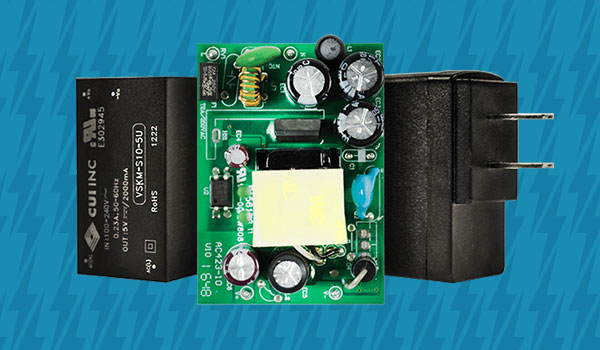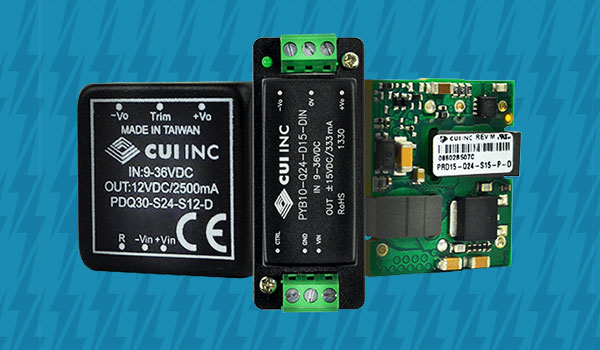Make or Buy a Power Supply: Choosing Between Custom and Off-the-Shelf Solutions
June 22, 2017 by Aaron Yarnell -
3 Minute Read
Last updated November 28, 2023

Reducing cost and minimizing size are key concerns for OEM design teams everywhere. In their pursuit of cutting expenses, many opt to focus primarily on the Bill of Materials (BOM) to find savings.
The lure of custom in-house development, especially for components like power supplies, can be strong. For instance, it may appear that designing power supplies in house is the right choice since a readymade, off the shelf solution can cost several dollars more. If the product is to be made in high volumes, the case can seem persuasive. Let’s dive deeper and consider additional factors in the cost equation.
Complexities of In-House Design
One factor to take into account is that making a power supply as small as possible is often a complex challenge. It can demand knowledge outside the in-house team’s main competencies, potentially causing delays. It may also require more expensive PCB assemblies, such as additional layers and heavier copper, which are not required by the rest of the product.
Other aspects of bringing up the design in-house and supporting it independently can be even more complicated and expensive. Special equipment may be needed, such as high-quality electronic loads for testing.
Managing Compliance
The design team must also ensure compliance with market specific safeties, such as IEC 62368 for ICT and AV equipment, or IEC 60601-1 for medical equipment. For products intended for international markets, compliance is further complicated by regional differences in these standards. The Power Sources Manufacturers Association (PSMA), of which CUI is a member, has published the Safety & Compliance Database to help with this, and CUI has published a downloadable guide to applicable safety standards, agencies and marks
The efficiency of the power supply can also strongly influence whether the product will meet Ecodesign regulations, such as the EU's minimum requirements for products such as LED lighting, white goods, and set-top boxes. In addition, customers will require reliability information and if a product warranty is offered this should extend to cover the power-supply components.
PCB Space and Layout Considerations
If the system requires only a small ac-dc power supply or dc-dc converter to provide just a few watts, it may be built directly onto the system PCB, where it must compete for space with the rest of the system circuitry. Components such as the transformer and electrolytic capacitors are relatively large and bulky and can be difficult to centralize. If the PCB as a whole is intended to have components populated on one side only, the discrete power solution will tend to spread out and consume valuable PCB real estate.
Of course, getting the PCB layout right affects not only the size of the resulting power supply, but is also critical to minimize the emission of high-frequency switching-noise, ensure proper thermal management, and to comply with applicable safety requirements, such as isolation distances.
Reference Designs: Customization Challenges
To overcome these challenges, a reference design from a chosen power component vendor may promise a quick and dependable solution. Power component vendors are skilled at specifying a generic bill of materials, while laying out recommendations and best design practices to cover basic requirements of a wide range of systems. However, every application is different, and the OEM team’s designated power supply designer will probably have to deviate from the reference design to meet performance demands, space constraints, thermal, or EMI requirements specific to their application. This can add time and cost to the project, and the resulting discrete power supply still may not perform as well as expected.
A Real-World Example
As an example, a new application may only require a two-layer PCB with 1 oz copper, but the chosen reference design for the discrete power solution recommends 4 layers of 2 oz copper. The option exists to double the PCB layers and double the copper weight of the entire application board, but this comes at a significant cost to the design. In addition, there is still the burden of time to carefully reproduce the manufacturer’s recommended layout of the power planes and traces for the discrete components.
Benefits of an Off-the-Shelf Design
Pre-designed power modules allow engineers to have the best of both worlds. They can design the system PCB using the fewest number of layers and the least amount of copper while leveraging the power module to simplify and optimize the power conversion needs. Instead of spending time evaluating products and reference designs from various discrete component vendors, laying out the power planes, keeping the feedback loop tight and quiet, and making sure no power switches are positioned close to sensitive analog circuitry, engineers can simply choose an appropriately-sized pre-designed power module that has been optimized to minimize board space, allowing them to focus their efforts on other tasks associated with the design.

Expediting Development with Certified Modules
Unlike a custom in-house power supply, off-the-shelf modules are already tested, qualified, and often pre-certified in accordance with international safety and EMI standards. By selecting a pre-certified power module, the certification process of the end-application can often be expedited. Reliability data is also readily available and, as a warrantied product, the module can reduce the overall cost for the OEM to support its own customers.
An example of a board mount module that is ready to use and can save OEMs development time as well as considerable engineering and support costs is CUI's PBO-5C series of 5 Watt ac-dc converters. These SIP (Single Inline Package) modules maximize PCB-space savings, are UL and CE certified, and provide safety features including a 3 kVac isolation voltage and short circuit and over current protection.

Opting for Pre-Designed Power Solutions
While there are certainly situations where the low-complexity of the power design coupled with high volume projections can justify a discrete power design, engineers are more often turning to pre-designed power module solutions when performance, reliability, time-to-market, safety, certification, and support are critical considerations. Yes, designing power supplies for your products in-house can trim a few dollars from the BOM, but it can also come at the cost of increased design risk and added development time.
You May Also Like
Have comments regarding this post or topics that you would like to see us cover in the future?
Send us an email at powerblog@cui.com




